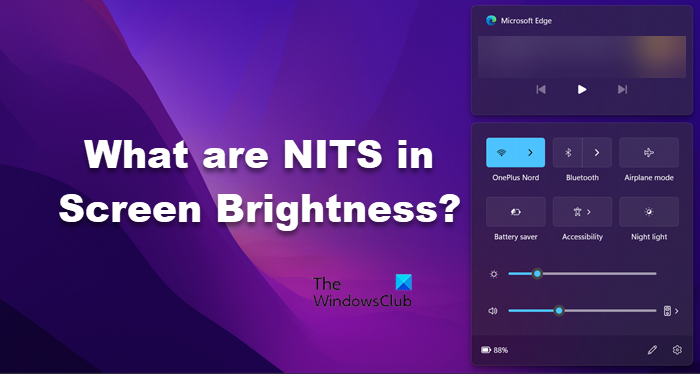Brightness is important in everything from phones and computer displays to TV screens and video boards. Bring your laptop or phone outdoors and you will realize that the display is nothing but shadows. Several mobile devices and tablets now feature auto-adjust capabilities, which help resolve the issue of brightness as it changes when stepping outdoors. The brightness of your LED screen may make or break its usefulness. We need to learn about NITS to understand the brightness of a mobile LED display or a permanent installation.

NITS in Screen Brightness
A NIT often referred to as candelas per square meter, is a unit of brightness measurement; it is the standard unit of luminance used to characterize different light sources. The human eye’s capacity to detect brightness is frequently expressed in terms of candelas, although the actual quantity of light sent out is indicated in lumens. Broadly speaking, a NIT is the amount of brightness that a viewer’s eye perceives from a screen. Since this metric is based on what the eye sees, it has a number of different inputs. How bright the eye can see depends on the number of lumens (how much light the screen gives off), the number of pixels, and the pixel pitch (how far apart the pixels are). But eventually, all that counts is how each of those elements interacts throughout the visual experience.
How do NITS work?
Consider the possibility of employing your phone for work. When your environment is brighter, you’ll need your screen to be brighter as well, and conversely. The higher the NITS number, the more capable of producing brilliant light it is. In light of this, screens designed for use outside must have a NITS rating that is higher than those designed for use inside.
We’re aiming for 1000–1500 NITS for interior LED displays or permanent installations when we speak about brightness levels. The conditions for seeing inside are largely under one’s control. The viewing experience may be better if the lights are not as bright and the windows are closed. However, outdoor issues aren’t always straightforward. Every day, the sun, which is the main source of light when you are outside, moves across the sky. So, the brightness around the viewing experience is always changing, and most of the places inside are much darker than the outside. Because of this, it is very important to have a good understanding of your mobile LED display’s luminance and NITS. For an outdoor display that may be seen in direct sunlight, we advise selecting a NITS value between 3000 and 7000. Your display will have the appearance of having shadows on it if you do not have sufficient NITS.
Read: Best Brightness Control Software for Windows
How bright should your display be
Different devices require different numbers of NITS to function properly. The number of NITS varies largely from user to user and purpose to purpose. Let us find out how many NITS your devices require to offer you a seamless experience. We are going to talk about the following devices.
- Smartphones
- Laptops
- Monitors
Let us talk about them in detail.
1] Smartphones
Smartphones go everywhere. You’ll likely check calls and texts in direct sunlight. Even at maximum brightness, if your screen isn’t bright enough, you’ll have to move to a darker spot to view your phone. Phones benefit from maximum brightness. So 300-1,500 nits would be required by smartphones to give you a great viewing experience.
2] Laptops
Laptops are used indoors, and even if you take them outside, it is very likely that you will sit in shade. So laptops do not require as many NITS as smartphones do. So a count between 200 and 600 NITS would be sufficient.
3] Monitors
Monitors require even fewer NITS than laptops. Laptops are sometimes used outdoors, but it is very rare that someone would want to use a bulky monitor along with the computer system outside. Hence, 100-500 NITS are enough for Monitors to function.
Although they are significant, nits should not be the sole criterion for selecting a screen until you explicitly require something brighter over a specified threshold for high dynamic range (HDR) content or for usage outside. The single most crucial element is just having a solid understanding of what a low, a medium, and a high nit value appears for a certain device so that you can make a sound choice. The brightness standard for HDR TVs is set at 1,000 nits, although an OLED display may fulfill the requirements for rendering HDR content with a light output of roughly 540 nits.
